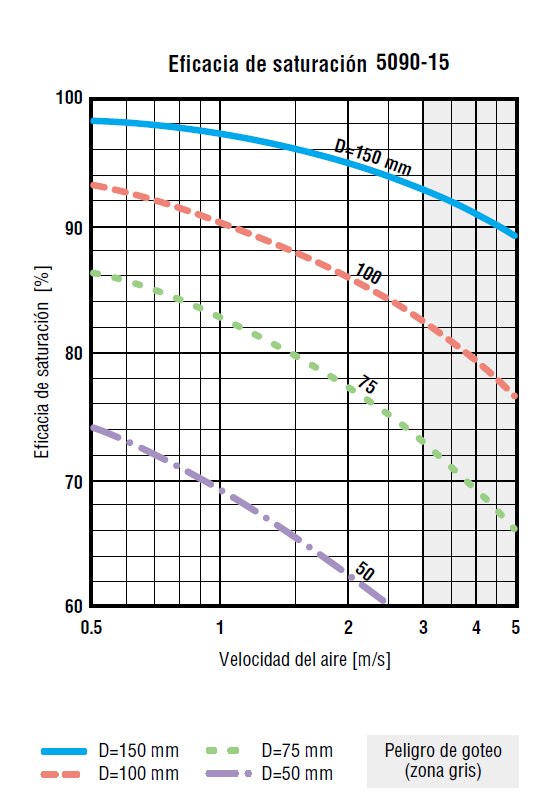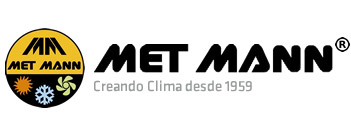The adiabatic efficiency of an evaporative air conditioner is the most fundamental part to determine the drop temperature and humidity that the equipment will provide us during its operation. The basic principle of an adiabatic cooling process consists of passing a certain volume of air through a hygroscopic panel soaked in water.
“Adiabatic efficiency is essential to determine the temperature drop of any evaporative cooler”
The aspirated or incoming air has temperature and humidity properties that normally correspond to those outside the room to be heated. This air, by making it pass through a soaked hygroscopic panel, enters into an adiabatic process of natural cooling where the air gives up its heat to the water and evaporates. After this process, the treated air is driven into the premises to be conditioned and is improves the thermal sensation, we reduce thermal stress and improve air quality thanks to constant renewal.
“To obtain a greater drop in temperature in an adiabatic process, it is essential that the inlet velocity be as low as possible”
In an adiabatic process, the entry speed to the hygroscopic panel is essential to obtain the greatest drop in temperature.
For example: if the air speed is 1 m/s, a temperature drop of up to 15ºC will be achieved and at 2.5 m/s the drop will correspond to 13ºC, in addition to running the risk of causing droplets to drag along in the blown air. by the fan. As we can see in the following graph, depending on the thickness of the panel and input speed, the efficiency of the panel is different.

How to determine the saturation efficiency of an evaporative cooler?
Evaporative air conditioners use the adiabatic cooling method and it is essential to know the real saturation efficiency value to be sure of offering a good adiabatic air conditioning system. Currently, we have detected some inaccurate data in some products and we consider it important to explain how in a very simple way to extract the real value of the saturation efficiency. To extract this value, the following data is required:
-
Equipment air flow
-
Area in m2 of the hygroscopic panel
-
Type of panel used and thickness
Once the data is collected, the next step is to determine the inlet velocity into the evaporative cooler. To define this value, the air flow of the equipment must be divided by the useful m2 of the hygroscopic panel of the evaporative cooler. As an example, we are going to take one of our evaporative coolers as a reference.
-
Model: AD-15-V-100-015
-
Actual air flow: 11,418 m3/h
-
Panel area: 2.84 m2
-
Hygroscopic panel type: 5090
-
Panel thickness: 100mm
Formula used
Flow ÷ Panel surface = m/h ÷ 3600 = m/s |
Result obtained: 11,418 m3/h / 2.84 m2 = 4,020 m/h / 3600 seconds = 1.116 m/s Once the air speed in m/s has been obtained, we must draw a line on the graph and we will be able to obtain the efficiency of actual saturation of the evaporative cooler. In this case, with an air speed of 1.11 m/s and using a 100mm thick 5090 type panel, the saturation efficiency is 90%. With the evaporative cooler saturation efficiency data, we are able to determine the properties of the treated air using the Mollier diagram. With this simple exercise, we can verify that the data provided by the manufacturers of evaporative coolers are real and thus be able to compare equipment with similar features. You can access our full range of evaporative or adiabatic air conditioning equipment at


